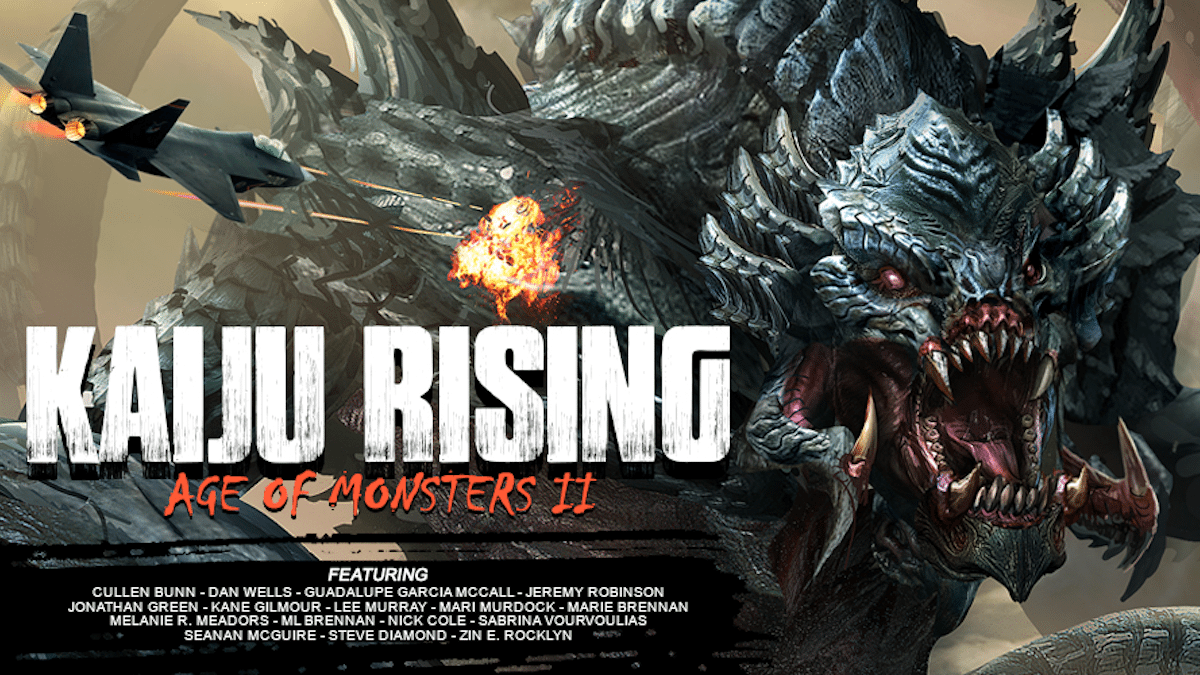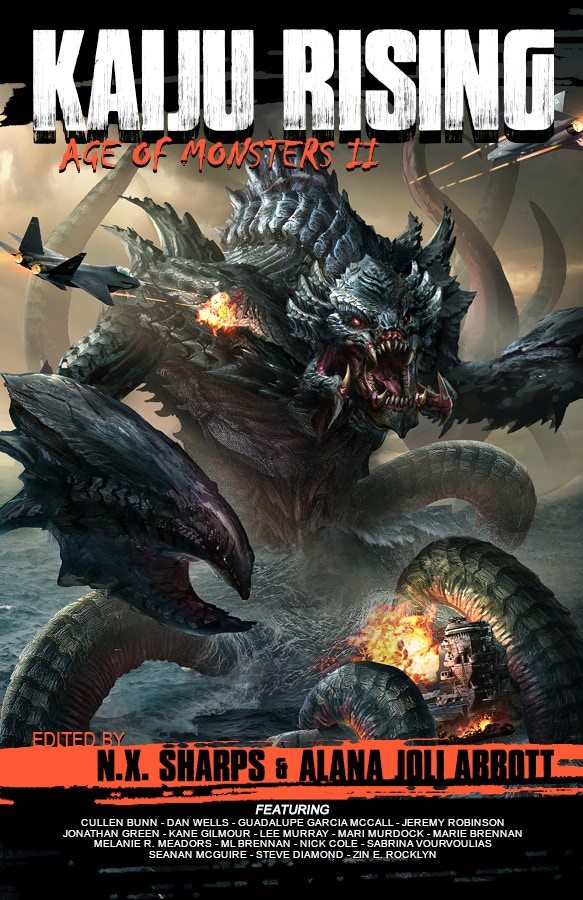
A few years ago, Kaiju Rising: Age of Monsters smashed onto the book scene, collecting stories from some of the best writers of monsters in the business. Now, the age of monsters continues on with the follow-up anthology, Kaiju Rising II (now on Kickstarter), featuring stories from authors like Seanan McGuire, Jeremy Robinson, Marie Brennan, Dan Wells, ML Brennan, Jonathan Green, Lee Murray, Cullen Bunn, and more! Alana Joli Abbott is one of the co-editors of the anthology, and she’s here to tackle a very important question: Where does the concept of kaiju come from? Please welcome her as our guest to GeekMom!
I have a three-year-old, so big monsters, in the form of dinosaurs, are a staple around my house. These creatures have strange names, roar, and stomp a lot. Most of the time, all of this happens through toddler filter, so my resident Tyrannosaurus Rex only comes up to my waist. But it’s safe to say that big monsters are very present in my life.
Before working on Kaiju Rising: Age of Monsters II, I didn’t know much about the origin of big monster stories in modern mythology. Were they dinosaur holdovers? Related to their fantasy-cousins, dragons and giants? Where do kaiju come from, anyway?
One of the things that I think is so cool about mythology is how it can evolve. Although I’ve found hints in articles that kaiju are the heirs of monsters from Japanese folklore, the truth is that they’re a specifically science fiction construct, even though they feel much older. While some kaiju might have an Elder Gods, Lovecraftian flare, kaiju were actually born in the 20th century—a mix of a filmmaker wanting to make bank on the popular Hollywood monster movies and the horror of atomic reality.

In the early 1950s, Japanese citizens were understandably wary—if not terrified—of the consequences of atomic weapons, having suffered two devastating bombings in 1945.
Survivors of the bombings were named hibakusha and were typically shunned due to public misunderstandings about radiation sickness and contamination. In 1954, fears of radiation were heightened again when twenty-three sailors aboard the fishing boat Daigo Fukuryū Maru got too close to the fallout of a thermonuclear test at Bikini Atoll. All twenty-three crewmembers suffered acute radiation syndrome. Although all but one recovered, those who were unable to hide their exposure to the radiation were shunned like the hibakusha, and the incident led to a growing fear of contamination in the fish. The fear was reasonable—the “danger zone” from the testing sites declared by the U.S. government underestimated the range that the weaponry would impact, and the fallout spread into an “expanded zone” that included the range of several fishing boats.
What would those fish do to people who ate them? What else might radiation do to the creatures inside the danger zone? Those very present fears, combined with the Japanese box office success of King Kong, created an opportunity for filmmaker Tomoyuki Tanaka to create a relevant, resonant genre of films. Gojira (Godzilla) released the same year as the Daigo Fukuryū Maru and it struck such a chord among Japanese and international viewers that the genre has continued to thrive and grow. The original Godzilla might have been a metaphor for nuclear weapons, but he later became something of a hero, defending humanity against other monsters.
So, Godzilla is the official start of the kaiju—but the idea of a large, prehistoric danger being awoken by the misdeeds of humanity? That’s an old, old story, and continues to be a staple of the SF/F genres inside the kaiju medium and beyond. And perhaps it’s also a good thing to remember around my three-year-old: beware the wrath of the prehistoric imagination!

Alana Joli Abbott is the editor in chief of Outland Entertainment, where she works on such projects as Kaiju Rising II, Warlock 5, and the Shotguns & Sorcery RPG. She is also author of the novels Into the Reach, Departure, and Regaining Home, interactive multiple choice novel apps including Choice of the Pirate and Choice of Kung Fu, and is the writer for the comic Ithaca. Her game writing has been featured in the award-winning Serenity Adventures and Dungeon and Dragon magazines. Alana has visited ancient ruins around the world; sung madrigals semi-professionally; and earned her black belt in Shaolin Kempo Karate. She lives near New Haven, CT.


This is so cool. I hadn’t known anything about the origin of Kaiju or Godzilla, for that matter. The perspective of the people in 1954 when Gozilla was released, fearing the aftermath of nuclear fallout, is so vastly different than now, where monsters have origins in all scopes of sci-fi and fantasy. Good and informative article. Thanks!